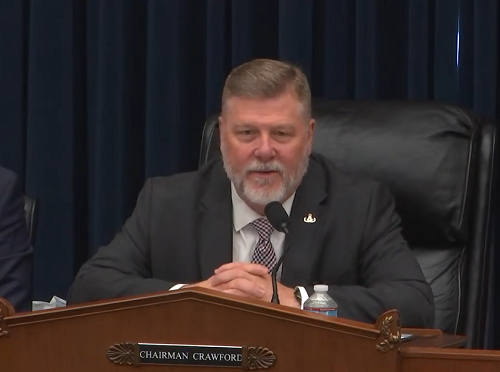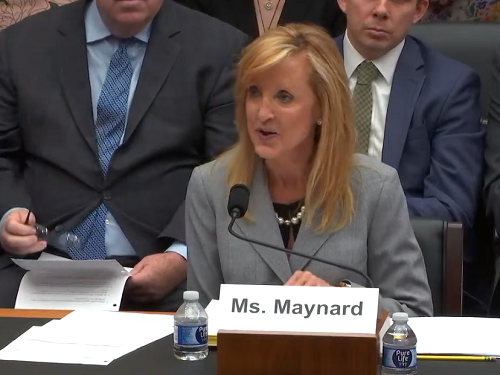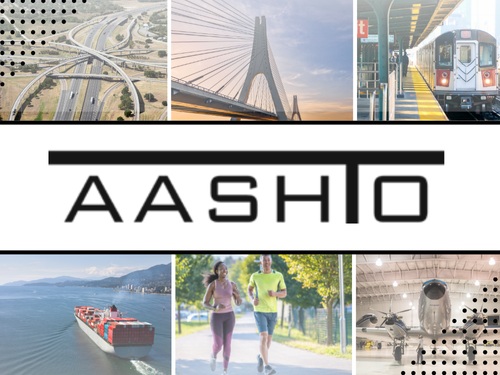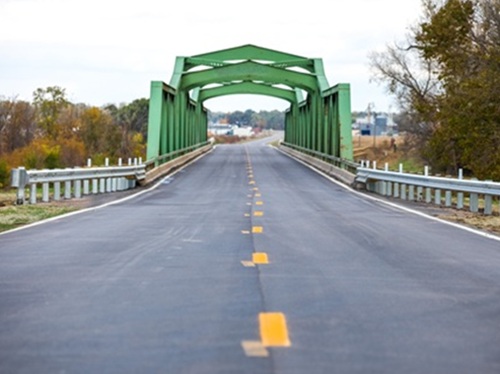A subcommittee within the House of Representatives Committee on Transportation and Infrastructure recently held a hearing to what trends are affecting the public transit sector as it continues to recover from the COVID-19 pandemic.
[Above photo by the House T&I committee]
Held by the Subcommittee on Highways and Transit on June 13, that hearing – formally entitled “Revenue, Ridership, and Post-Pandemic Lessons in Public Transit” – elicited insights from four witnesses: M.J. Maynard, CEO of the Regional Transportation Commission of Southern Nevada on behalf of the American Public Transportation Association; Laura Hendricks, CEO of Transdev U.S. on behalf of the North American Transit Alliance; Marc Scribner, senior transportation policy analyst with the Reason Foundation; and Greg Regan, president of the Transportation Trades Department within the AFL-CIO.

“Like all industries, COVID had a huge impact on transit services; accelerating what were already declining ridership rates and causing a historic decline in overall ridership and fare revenue collections,” noted Rep. Rick Crawford (R-AR), the subcommittee’s chair, in his opening statement at the hearing.
“Due to this, the FTA [Federal Transit Administration] received significant funding in the various COVID-relief bills. Specifically, FTA was provided nearly $70 billion to distribute to transit agencies nationwide to cover short-term budget gaps – primarily operating expenses such as labor costs,” he said.
“The Infrastructure Investment and Jobs Act (IIJA) – subsequently signed into law in November 2021 – provided a further $108.2 billion for public transportation, the largest amount of funding for those programs in American history,” he noted. “That’s almost $180 billion in federal money that has been allocated since 2020 for transit programs.”
As a result, Rep. Crawford said one of the main goals of this hearing is to “gain a better understanding” of how that funding has been used; particularly as not all transit systems or agencies are created equal for the purposes of funding allotment.

Rep. Rick Larsen (D-WA), the ranking member on the house T&I committee, noted at the hearing that while riders continue to return to transit, current ridership volume nationwide is about 80 percent of what it was in 2019.
“This drop in ridership has had lingering impacts on transit agency operations and budgets, which rely on fare revenue,” he explained in a separate statement. “In 2020, transit agency fare revenue nationwide dropped by nearly half, and roughly 50 percent of transit agencies reported having to make service modifications in response to the loss of riders and revenue. As ridership has returned, fare revenue is also rebounding, but transit agencies continue to need to cover the gap in their operational costs.”
RTC’s Maynard noted in her testimony that, in 2023, public transit increased 16 percent nationwide – even though office occupancy remained flat at some 50 percent throughout all of 2023.
“Public transit agencies have outpaced the return to office by developing new solution-oriented service models to address specific community needs: people living in areas currently underserved by transit, individuals who require wheelchair access, and riders who commute during off-peak, late-night hours,” Maynard noted. “On-demand ride-sharing services, vans and shuttle buses, and other micro-mobility options (e.g., bikes, scooters) provide customers the access and flexibility they need to connect to transit or their final destinations, reduce commute times, and decrease reliance on personal cars.”
She pointed out that public transit agencies are also now harnessing new smart technologies to better serve customers and enhance safety.

“As traffic manager for the Las Vegas region, RTC received a $3.5 million grant to implement a pedestrian detection/collision avoidance system that uses artificial intelligence to identify potential hazards and alert drivers in real time,” Maynard noted. “The system is comprised of multiple smart cameras equipped with night-vision technology, strategically placed to maximize coverage of vulnerable road users who enter designated danger zones surrounding the bus; interior and exterior speakers that provide audible alerts to warn drivers and vulnerable road users of a potential collision; and driver alert displays within the bus that warn the operator of a potential hazard.”
That said, the loss of fare revenue has had a much more pronounced impact on public transit agency operating budgets as they provide on average 35 percent of transit agency operating budgets.
“In addition, operating costs have increased substantially since 2019. Inflation has increased the price of goods and services that transit agencies purchase, with a tight labor market forcing agencies to increase compensation to attract and retain workers, which has also increased costs,” she said. “As a result of these increased costs, together with the fact that fare revenues have not fully recovered, some transit agencies are facing looming operating budget shortfalls, or a ‘fiscal cliff.’”
To offset that issue, Maynard said Congress should fully fund public transportation as authorized by the IIJA; providing at least $21.9 billion for public transit and $20.6 billion for passenger rail in the fiscal year 2025 Transportation, Housing and Urban Development, and Related Agencies or THUD Appropriations Act, while accelerating project delivery by enacting commonsense regulatory reform, such as streamlining real property acquisition for public transit projects.
“Each $1 invested in public transportation generates $5 in long-term economic returns,” she added. “And every $1 billion invested in public transportation creates or sustains nearly 50,000 jobs across the entire economy, including in non-transit industries. Thus investment in public transportation creates jobs in communities of all sizes throughout the country, including in smaller urban and rural areas where buses, railcars, and their parts are often manufactured.”
 Nation
Nation
Registration Open for 2026 AASHTO Washington Briefing
December 12, 2025 Nation
Nation

